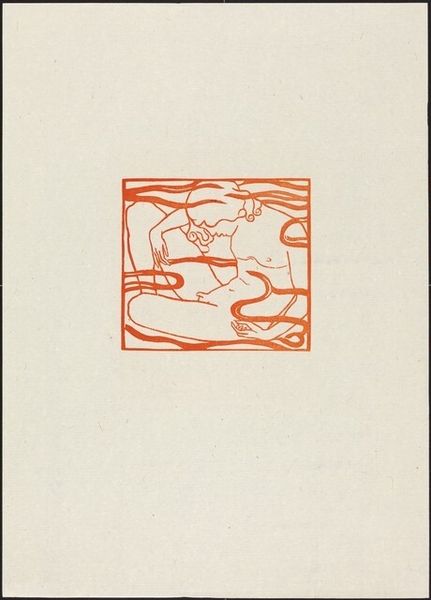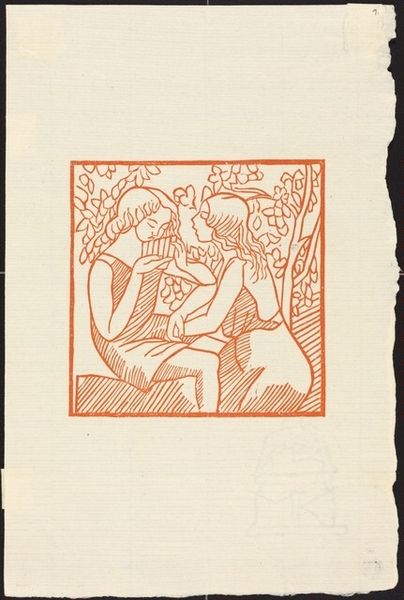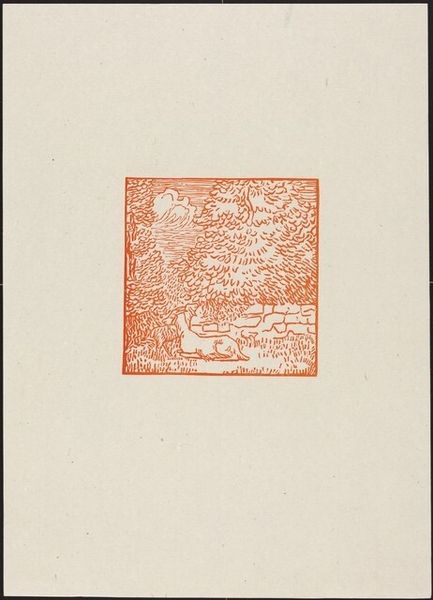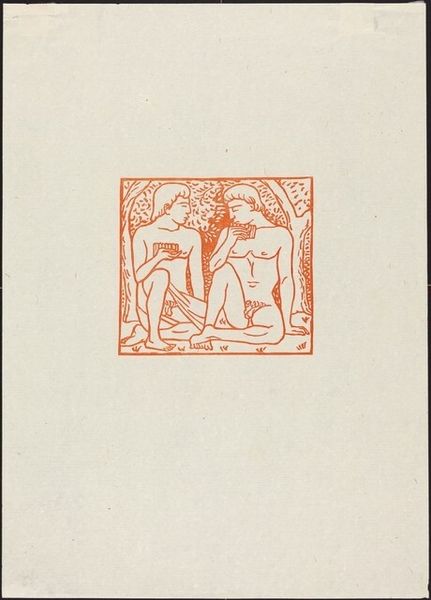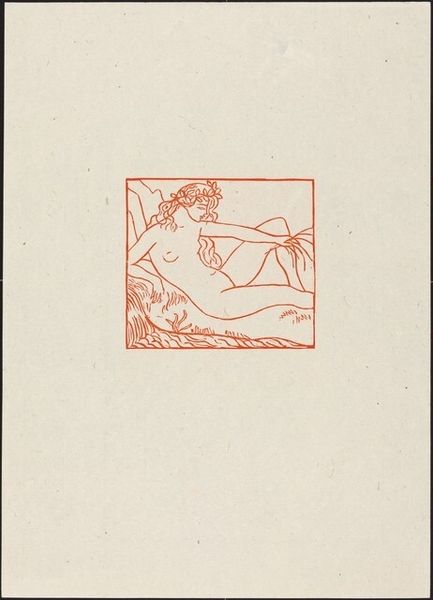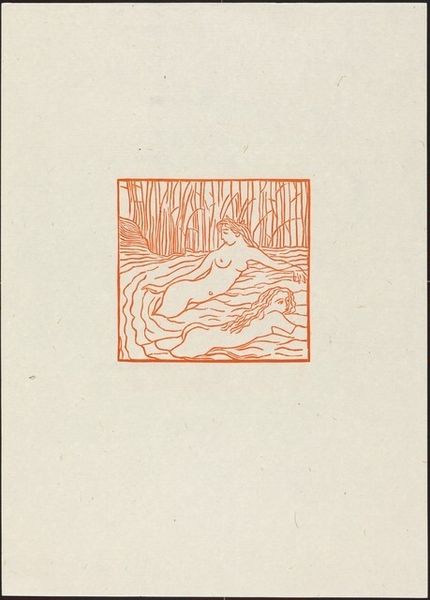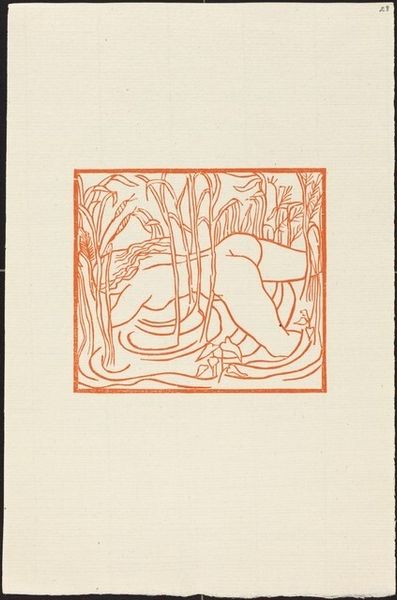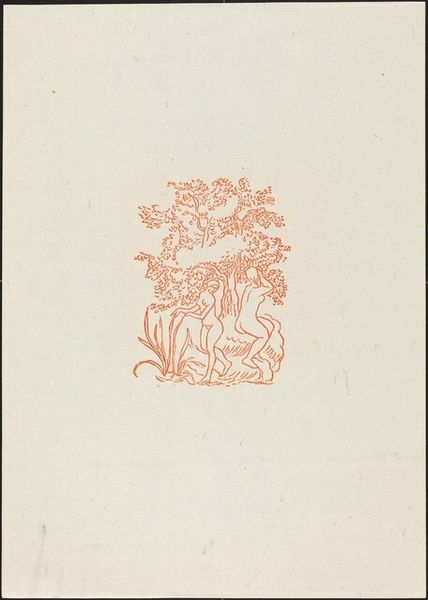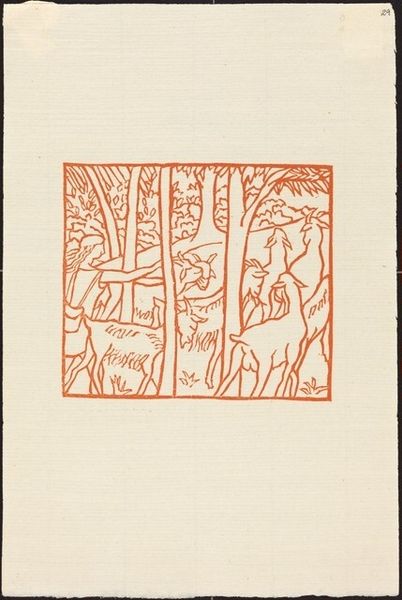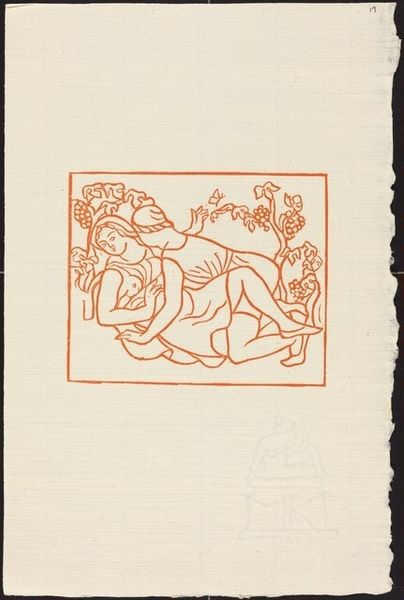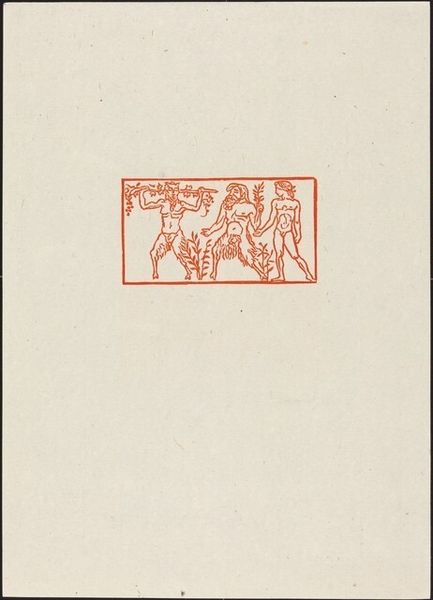
Second Eclogue: Shepherd Corydon Ardently in Love (Corydon) Possibly 1926
0:00
0:00
drawing, print, linocut
#
portrait
#
drawing
# print
#
linocut
#
figuration
#
linocut print
#
line
Copyright: National Gallery of Art: CC0 1.0
Curator: Aristide Maillol's linocut print, possibly from 1926, titled "Second Eclogue: Shepherd Corydon Ardently in Love" presents a solitary figure amidst stylized foliage. Editor: It's striking how contained it feels. The rigid square framing this vulnerable, contemplative figure emphasizes a certain isolation. Curator: Indeed, the square format and the surrounding dense foliage act as visual constraints. Maillol employs the linocut medium to great effect. Look at the crisp, economical lines defining the figure and the surrounding flora. The positive and negative spaces play beautifully off of each other. Editor: And the single color reinforces that sense of distillation. It seems to be making a clear statement about form, perhaps drawing from classical ideals. The figure itself seems almost archetypal. Do we know anything about how this print relates to larger social contexts? Curator: The Eclogues, originally by Virgil, present pastoral scenes, often idealized, within a structured and orderly format. Maillol's treatment retains this sense of structured pastoral themes while exploring universal human emotions, particularly longing. There is no social criticism directly presented in the image, however there is context about what his role was in public imagery production through artistic societies of the time. Editor: Yet there's a profound melancholy communicated simply through the figure's posture and the framing. The formal composition traps Corydon and his ardent love within this square— a poignant comment on longing and unrequited feelings within any society at any point in time. Curator: Precisely. By stripping away excess and focusing on essential forms and themes, Maillol provides us with the pure symbolic. Editor: I hadn't considered how such reduction actually amplifies the emotion. It allows the viewer's interpretation to fill the void, drawing us into a space of shared introspection, which the museum often struggles to facilitate given all the context we attempt to provide. Curator: A fitting example, and hopefully one of many intimate, thought-provoking encounters within our collection.
Comments
No comments
Be the first to comment and join the conversation on the ultimate creative platform.

